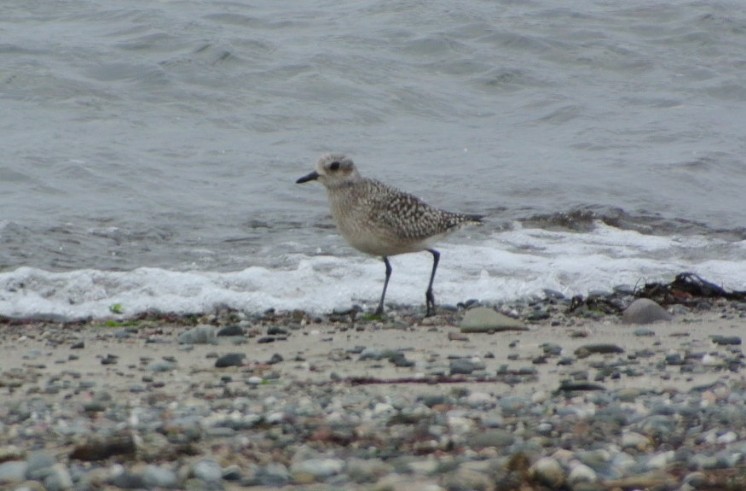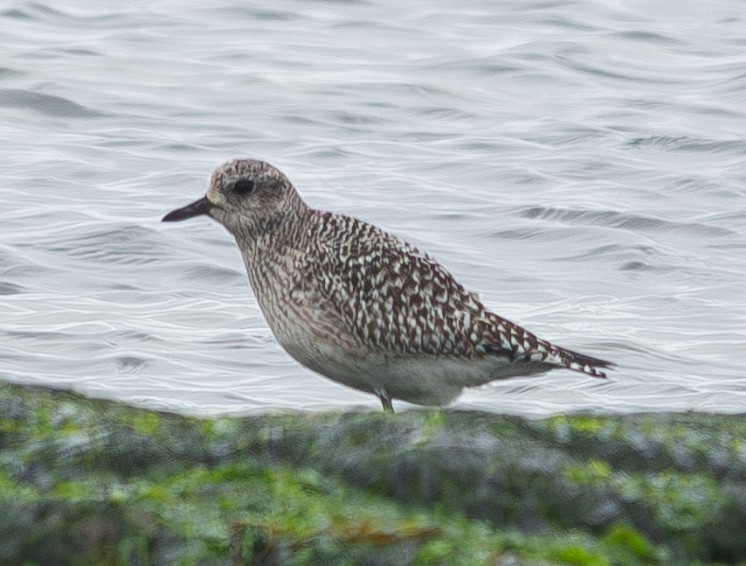Grey Plover
Reports

On Monday 1 April, there was a report of a Grey Plover on Silver Sands, Kildonan. This is the first Arran report of Grey Plover since there was one on Cleats Shore five years ago on 26-27 April 2019. The bird this year stayed until Friday 5 April. Grey Plover is an uncommon passage migrant and winter visitor to Arran. Looking at the Arran records for the last twenty years there have been five spring records, three autumn records and four winter records, mainly single, occasionally two. Yet every spring and every autumn, vast numbers of these birds will be passing over on their annual migration to and from their breeding grounds in the Arctic Tundra.
The Grey Plover or Black-bellied Plover is a large plover breeding in Arctic regions. It is a long-distance migrant, with a nearly worldwide coastal distribution when not breeding. The English common name used for this species differs in different parts of the world. It is generally known as Grey Plover in the Old World and Black-bellied Plover in the New World.
In spring and summer (late April or May to August), adults are spotted with black and white on the back and wings. The face and neck are black with a white border; they have a black breast and belly and a white rump. The tail is white with black barring. The bill and legs are black. They moult to winter plumage in mid-August to early September and retain this until April; this being a fairly plain grey above, with a grey-speckled breast and white belly. The juvenile and first-winter plumages, held by young birds from fledging until about one year old, are similar to the adult winter plumage but with the back feathers blacker with creamy white edging. In all plumages, the inner flanks and axillary feathers ( “armpits” or “oxters”) at the base of the underwing are black; a feature which readily distinguishes it from other species in flight. On the ground, it can also be told from the other plovers by its heavier bill.
Their breeding habitat is Arctic islands and coastal areas across the northern coasts of Alaska, Canada and Russia. They nest on the ground in a dry open tundra with good visibility. They migrate to winter in coastal areas throughout the world. The Grey Plover makes regular non-stop transcontinental flights over Asia, Europe, and North America. Some stop off to winter on the coasts of the UK. In the UK it is generally seen in small numbers, although flocks can form when there is a high tide. Like most plovers it stands very upright and tends to run and then suddenly stop to feed.
In Scotland, Grey Plover is a passage and winter visitor to muddy estuaries, principally in eastern and central Scotland and the Solway Firth. It is less abundant on the west of Scotland with the exception of the Uists, Tiree, Argyll and the Firths of Clyde and Solway. It has been recorded as far north as Yell in Shetland in the winter.
